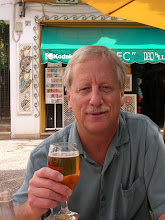I am reading Ghost Wars by Steve Coll, an account of Afghanistan from the Soviet invasion of 1979 through 9/11. It is page-turner, with the first quarter of the book setting the background, with some great chapters on the history of Saudi Arabia, bin Laden, William Casey and the years leading up to 1986. Covert funding for the Soviet opposition increased dramatically in the mid-80's due to Congressional appropriations to the CIA (led by Charlie Wilson), which were matched by official Saudi contributions by their intelligence agency, and by massive private Saudi contributions. The CIA did not even have an outpost in Afghanistan in 1979 and for years we funneled all our money through the Pakinstani intelligence agency, the ISI. Although there were many groups fighting the Soviets, most of this massive surge in funding went to the Islamist groups such as Hekmatyar's. The Pakistani border ended up being a huge enclave of ISI, Arab volunteers and Wahhabi madrasses. They trained 6000-7000 jihadists a year.
The U.S. promoted these jihadists and the recruitment of Arab volunteers. The focus of the Reagan administration and especially Casey, was the defeat of the Soviets at all costs. Casey saw links of revolutions to Russia everywhere, including the IRA, Basque nationalists, Palestinian terrorists, and others. He was also very religious and saw a natural coalition of Christians with the Islamists against the atheistic communists.
The Islamist movement had been becoming more radicalized over the years, initially from the Muslim Brotherhood in Egypt in the 1920's. Cairo was the intellectual center from which the radical views spread, eventually to the university bin Laden attended in Saudi Arabia, but also to Afghanistan. However, most Afghans were primarily influenced by Sufiism and little in common with the Wahhabi-led extremists. They were a diverse bunch and included Ahmed Shah Massoud, the most formidable Afghan military leader who headed a northern alliance. Robert Gates, then second in command at the CIA, remarked in his memoir in 1996, that "no one should have any illusions about these people coming together politically."
The Saudi budget for 1969-74 was $9.2 billion. For the next five years, it was $142 billion. A generation removed from nomadic poverty, they were now powerful players. From the beginning, Ibn Saud had linked his power with the Wahhabis. Sensing the threat from Islamic radicalism, he embraced it, hoping to control it. There seemed to them to be no plausible politics but strict official religiousity and many of the royal family were true believers. Their state was, after all, the only modern nation-state created by jihad. In Afghanistan, bin Laden was just one of a variety of actors. But he began to ask the question of whether the jihad should not be just against the communists, but also against the corrupt governments of the Middle East, the U.S. and Israel. He was well-connected, wealthy and moved freely in circles of Saudi intelligence.
The Soviet introduction of the elite Spetsnaz, along with their Mi-24D Hind attack helicopters, seemed to be winning the war in 1984. But along with the increased funding, Afghan rebels now got satellite reconnaissance and Stinger hand-held missiles. On September 26, 1986, they were first put into use, detroying three Soviet helicopters.
An RCT on AI and mental health
4 hours ago




No comments:
Post a Comment